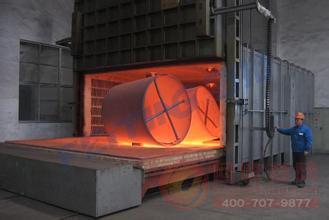1. Normalizing: The steel or steel is heated to a suitable temperature above the critical point aC3 or aCM for a certain period of time and then cooled in the air to obtain a heat treatment process of the pearlite-like structure. 2. Annealing: heating the hypoeutectic steel workpiece to a temperature above 20 °C of 40 °C, after a period of heat preservation, cooling with air (or buried in sand or lime) to 500 ° below the heat treatment in air Process 3. Solution heat treatment: heating the alloy to a high temperature single-phase zone constant temperature, so that the excess phase is fully dissolved into the solid solution, and then rapidly cooled to obtain a supersaturated solid solution heat treatment process 4. Aging: The phenomenon that the alloy changes its properties over time after solution heat treatment or cold plastic deformation at room temperature or slightly above room temperature. 5. Solution treatment: fully dissolve various phases in the alloy, strengthen the solid solution and improve toughness and corrosion resistance, eliminate stress and soften, and continue processing 6. Aging treatment: heating and keeping warm at the temperature of the strengthening phase, allowing the strengthening phase to precipitate and harden, improving the strength. 7. Quenching: heat treatment process in which the steel is austenitized and cooled at an appropriate cooling rate to cause the unstable structural transformation of martensite or the like in all or a certain range of the cross section. 8. Tempering: heating the quenched workpiece to a suitable temperature below the critical point aC1 for a certain period of time, followed by cooling in a satisfactory manner to obtain the desired microstructure and properties of the heat treatment process 9. Carbonitriding of steel: Carbonitriding is the process of simultaneously infiltrating carbon and nitrogen into the surface of steel. It is customary for carbonitriding, also known as cyanidation. At present, it is widely used in the medium temperature gas carbonitriding and low temperature gas carbonitriding (ie gas nitrocarburizing). The main purpose of carbon monoxide in medium temperature gas is to increase the hardness, wear resistance and fatigue strength of steel. The low temperature gas carbonitriding is mainly nitriding, and its main purpose is to improve the wear resistance and seizure resistance of steel. 10. Quenching and tempering: The heat treatment combined with quenching and high temperature tempering is called quenching and tempering. Quenching and tempering is widely used in a variety of important structural parts, especially those that work under alternating loads, such as connecting rods, bolts, gears and shafts. After quenching and tempering treatment, the tempered sorbite structure is obtained, and its mechanical properties are superior to the normal-fired sorbite structure of the same hardness. Its hardness depends on the high temperature tempering temperature and is related to the tempering stability of the steel and the cross-sectional dimensions of the workpiece, generally between HB200 and 350. 11. Brazing: a heat treatment process in which two workpieces are bonded together with a brazing filler metal Types and applications of tempering According to the different performance requirements of the workpiece, depending on the tempering temperature, the tempering can be divided into the following types: (1) Low temperature tempering (150-250 degrees) The tissue obtained by low temperature tempering is tempered martensite. The purpose is to reduce the internal stress and brittleness of the quenched steel under the premise of maintaining the high hardness and high wear resistance of the quenched steel, so as to avoid cracking or premature failure during use. It is mainly used in various high carbon cutting tools, measuring tools, cold stamping dies, rolling bearings and carburizing parts. The hardness after tempering is generally HRC58-64. (2) Medium temperature tempering (350-500 degrees) The tissue obtained by medium temperature tempering is tempered troostite. Its purpose is to achieve high yield strength, elastic limit and high toughness. Therefore, it is mainly used for the treatment of various springs and hot working dies, and the hardness after tempering is generally HRC35-50. (3) High temperature tempering (500-650 degrees) The structure obtained by high temperature tempering is tempered sorbite. Conventionally, the heat treatment combining quenching and high temperature tempering is called quenching and tempering treatment, and the purpose is to obtain comprehensive mechanical properties with good strength, hardness, plasticity and toughness. Therefore, it is widely used in important structural parts of automobiles, tractors, machine tools, etc., such as connecting rods, bolts, gears and shafts. After tempering, the hardness is generally HB200-330. Pesonal Care Cases,Protective Hard Shell Tool Case,Electric Razor Shaver Eva Case,Travel Organizer Eva Case Dongguan C.Y. RedApple Industrial Limited , https://www.zjhpgbags.com